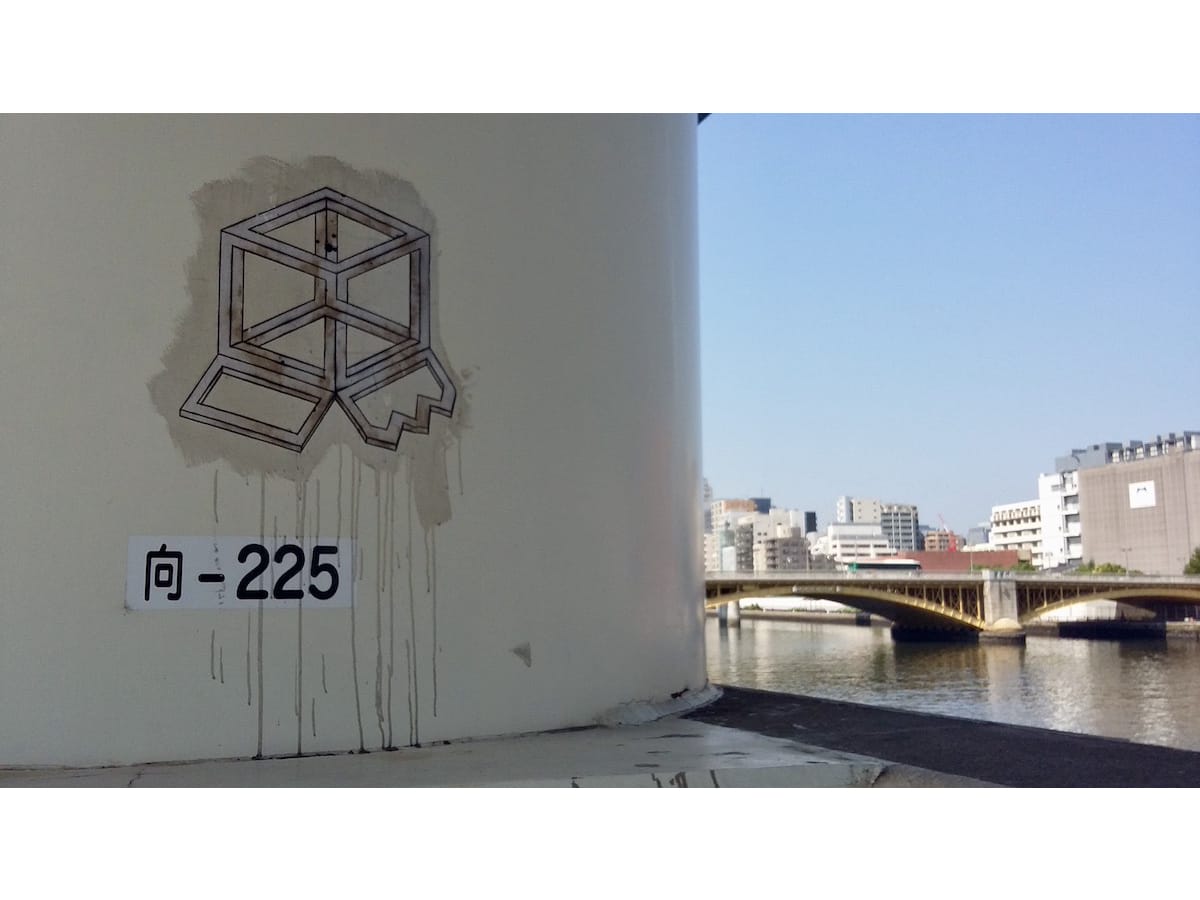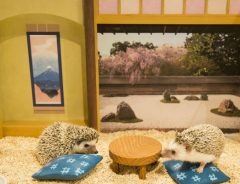
Stencil art in Ryogoku - a comment on 'structured emptiness' perhaps? | Photo by George Lloyd
The street art scene in Tokyo
- Tags:
- street art / Tokyo
Related Article
-

Tokyo releases its “Tokyo Sustainability Action” plan for realization of SDGs in English
-

World’s Most Intense Matcha Ice Cream Makers Turn Their Rich Expertise to Green Tea Chocolate
-

Incredibly Lifelike Robot Fish Swim At Japan’s Robot-Staffed Hotel
-

Tokyo’s Halloween Pumpkin Ramen Looks Like a Witch’s Brew
-

New Dollhouse Hedgehog Cafe Opens In Tokyo
-

Tokyo Railway Installs “Nesting Boards” In Stations For Birds With No Other Options


Mention street art in Tokyo, and anyone familiar with the city will wonder what you're talking about. Sharp eyed observers might have spotted a few pieces of graffiti around the biggest stations and under railway bridges in the suburbs, but for the most part, the walls of the city are untouched by freelance street artists.
Nor are there many murals, the officially sanctioned street art that adorns the walls of apartment blocks, bars and fashion boutiques in big cities like New York, Melbourne and London. Shibuya station has Taro Okamoto's Myth of Tomorrow, but nothing to rival Mexico City, the city it was originally created for, where the mural has become a form of national storytelling.
Taro Okamoto's Myth of Tomorrow in Shibuya station. | Taiyo Fuji, CC by SA 2.0, © Flickr.com
Graffiti has always existed in western cities, but it only became artistic in the '70s. It was all about bombastic self-aggrandisement and thrived in neglected neighbourhoods, where young people were hungry to make their mark.
Since the '80s, graffiti has morphed into street art and become part of a challenge to mainstream art, being untrammelled by distinctions between high and low art. Street art is attention-grabbing, didactic and often has a political dimension, which explains its popularity in polarised cities like Bogota, Rio de Janeiro and Gaza.
A beautiful one off in praise of the former PM in a Harajuku back street. | Photo by George Lloyd
But expand your definition of street art a little and you'll find that Tokyo is rich in public self-expression. There's not much in the way of graffiti, but many artists write on stickers, which they then post on walls, doors and air conditioning units around nightlife hubs like Shinjuku, Shibuya and Harajuku. Others use stencils, or printed blow ups of their work.
The eyes have it: photocopies on the wall in Shinjuku. | Photo by George Lloyd
Some shop owners are happy to have an artist enliven their shop front with a work of art. Many Japanese artists take their cue from manga, like this clothes shop in Harajuku....
Photo by George Lloyd
...while others are inspired by the monsters of Japanese folklore, like the creator of this mural in Okubo.
Photo by George Lloyd
Some street art is designed to provoke, like these hand grenades on the side of a vending machine in Ueno...
Photo by George Lloyd
Some is designed to reassure...
The Japanese word 大丈夫 daijōbu means "OK" or "alright." | Photo by George Lloyd
...while other works are more ambivalent.
Photo by George Lloyd
A lot of the art you see on the street functions as advertising, like this mural for a pipe company in Okachimachi.
Photo by George Lloyd
This shopfront in Asakusa is also advertising something, though it's hard to say what it might be.
Photo by George Lloyd
Other times, it's enough to just give window space to an artist, like this window in Shinjuku...
Photo by George Lloyd
And sometimes street art is nothing more radical than decorating your front window with animal figures paying homage to their favourite jockeys, like this creation in Kuramae.
Photo by George Lloyd
The point is that the streets of Tokyo abound in artistic expression. Most of it is a long way from what is usually understood as 'street art,' but it adds up to a feast for the eyeballs of a kind you can only find in the Japanese capital.